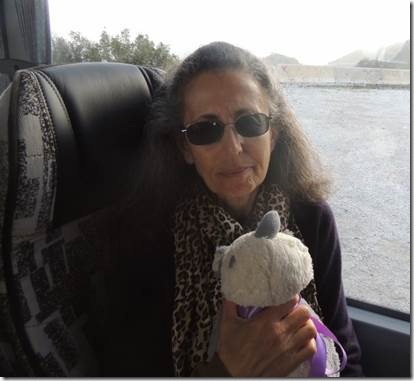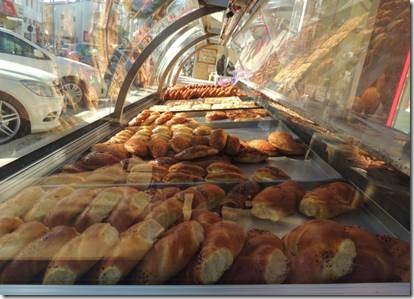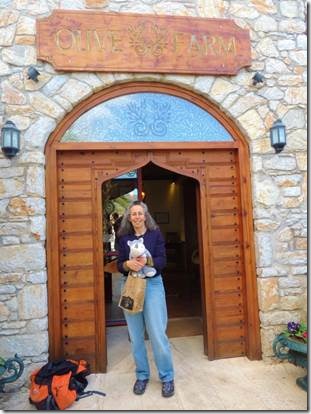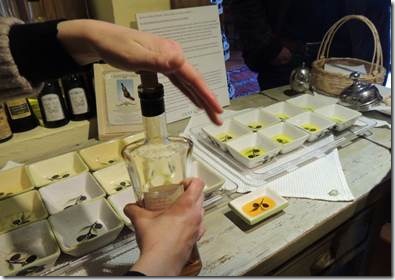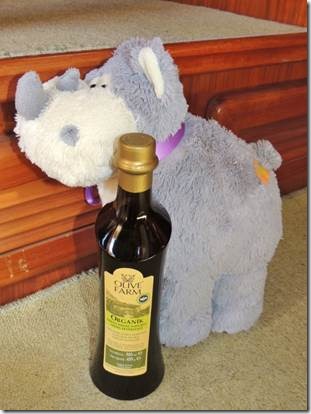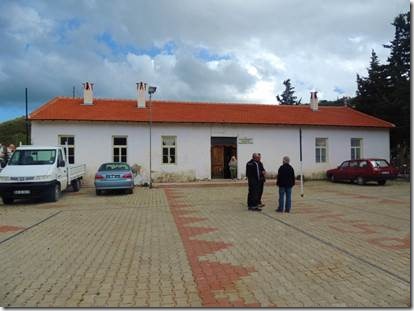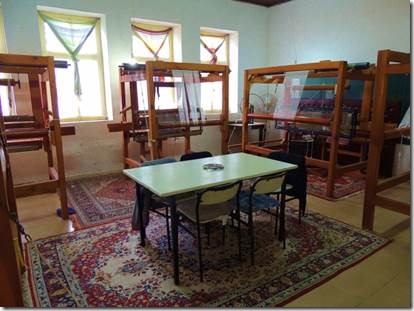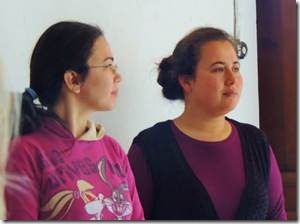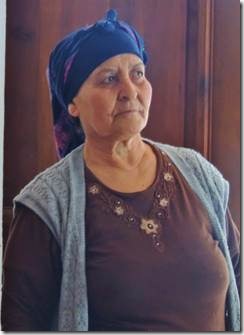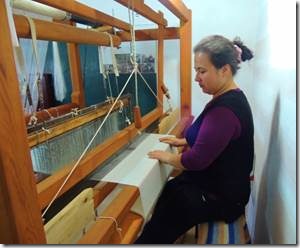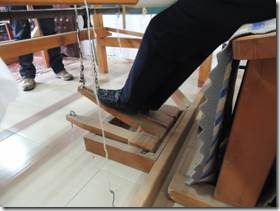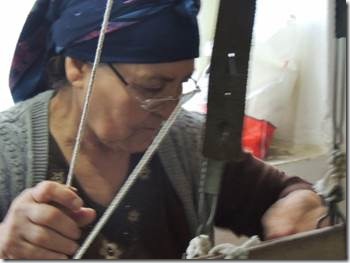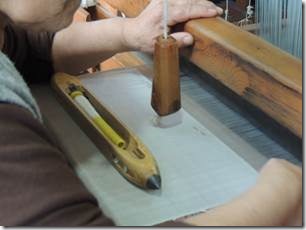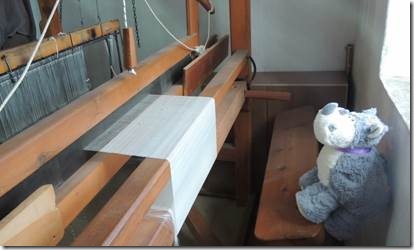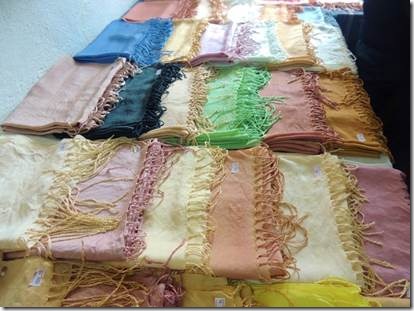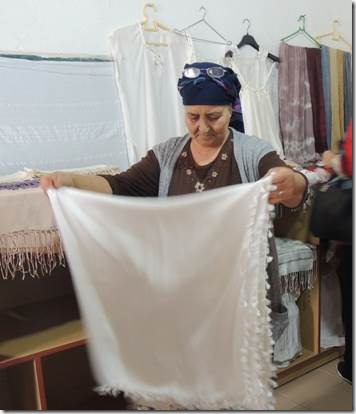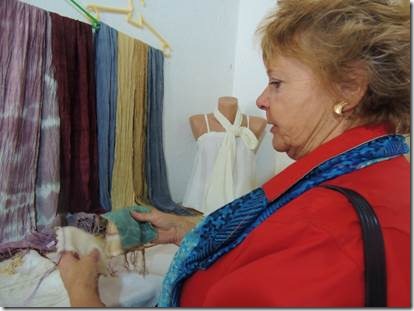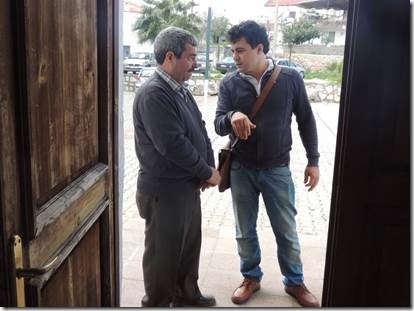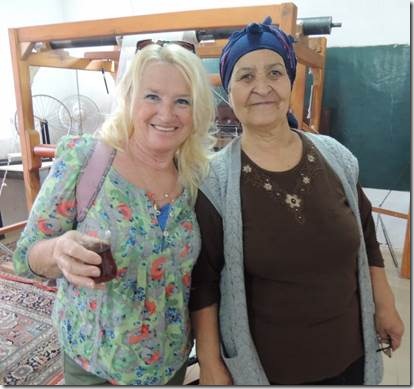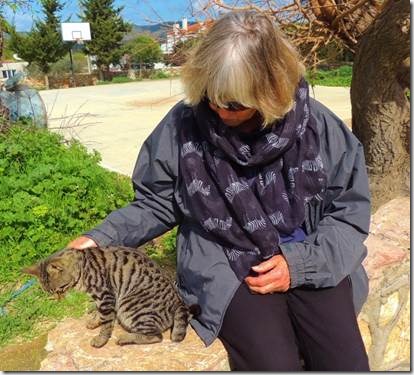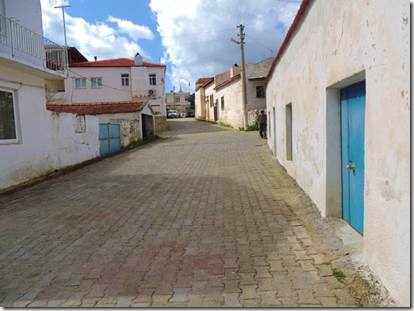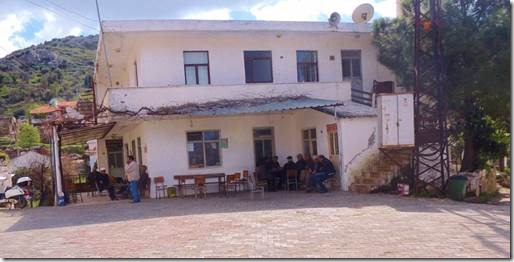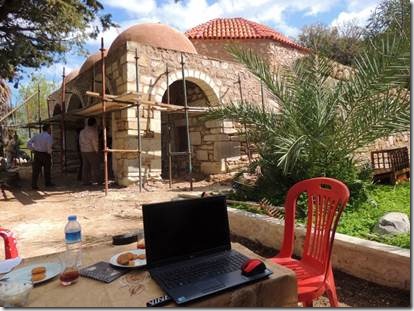Merhaba,
It’s 9:45 am and the “pump out “ guys are coming at 10. Randal is not here so I’m having to do this less than pleasant task. The men who come to do this are quite helpful so I’m sure it will go fine. Yuck Poo!
This is part one of our Wednesday bus trip to Datҫa.
Ru
DoraMac
In May 2011 Randal and I took the motorbike to Datҫa on our quest for Turkish carpets. We didn’t find carpets, but both of us loved the quiet coastal town. We found an “off season” hotel room on the beach and biked back to Marmaris the next day. On the way home we happened to revisit places in Turgut but also discovered a carpet showroom and bought the carpets we now have on DoraMac.
http://www.mydoramac.com/wordpress/?p=6867 is the entry about that trip with some info about Datҫa.
One of the things we didn’t do on that trip was visit the Olive Farm. So when Gwen planned a day trip to Datҫa with a visit to the Olive Farm and a silk weaving center I decided to go along. It’s also a lovely drive over the mountains and along the coast. It’s more fun on a motorbike; but you get to Datҫa more quickly by bus.
|
We had a huge comfy bus. |
|
We stopped to take photos of Datҫa’s famous old windmills. February is well before tourist season so none of the windmills was available for visiting. I did find the following website where folks were able to visit. I wish I could take credit for the “La Mancha” reference! We saw a half dozen of the new, industrial style windmills which I happen to like though folks say they are noisy. “When the sign says you have 10 km to Datca, you start to see modern windmills to your right. They are spread all over the land. Datca is known for being windy and is a popular spot for surfers. When you have around 5-6 kms to Datca, there is a dirt road to your right. That road leads to the old windmills, which are really close to the main road anyway. The windmills were made around 1800s, right now they are either waiting to be restored or broken down. 2 of them are already restored, the biggest one turned into a café. When you go past the restored ones, a little walk uphill takes you to the other ones. When we observed them, we saw that they used to have three stories, first story had a fireplace, built in storage areas and a place to rest. Third story obviously had the millstone and the whole mechanism. Our observations were confirmed when we saw the third windmill still had its roof, stories and millstone in place. We figured the second floor was for storage. Everything was still in its place in this third mill, compared to the other two which didn’t have much left that wasn’t decayed, and had fig trees growing inside. Seeing the mills in such state left our imaginations running. Even if they were broken down, (and weren’t in La Mancha), they were kind of fascinating. http://www.lomography.com/magazine/locations/2009/11/16/windmills-datca |
|
You will never go hungry on a Gwen trip….even if it was to a desert island or the moon. There would be a coffee/bakery/something stop along the way. And on the way back too! |
|
Almond cookies See the picture of the cookies on the top right corner? Apparently Datҫa is famous for them. Well they didn’t have any the morning we stopped there. (I had a very thin sesame cookie that tasted like a cross between a simit and a cookie and was pretty good.) But the folks at Nokta, being the gracious hosts that they are and not wanting us to miss out on the almond cookies, baked some for us. We returned there late in the afternoon before returning to Marmaris so everyone could buy some almond cookies. There’s no parking around the bakery so Taṣ, our energetic and always helpful guide, took our cookie order and went off to the bakery to get them while we sat on the bus. I ordered 2 not realizing that each was the size of your hand and that when you ordered 1 cookie you got 2 as they come flat sides pressed together with the rounded side away. (Picture a cookie the size of your palm; then picture 2 and then 2 more. I had enough cookies for a lifetime. They tasted like very moist almond flavored sugar cookies. I have no photo as I inhaled one very fast and took the 3 remaining monster cookies in my bag and foisted them onto Rick, Mary and Robert. Though Robert is very thin he could eat my three cookies without batting an eye. If I’d eaten them my eyes would have been popping out of my head. Sugar is addictive; one bite and I’m a goner. It’s like; I’ll just have a piece and then it’s I’ll just have one more piece and then one more and that cookie is eaten and then it’s, I’ll just eat them all and be done with it. And then I’m for sure sick. |
|
This is the Olive Farm and I’m holding the bag with the bottle of Olive Oil that we bought. It was more expensive than supermarket olive oil, but Datҫa is famous for its olives so we had to have some. Just like we had to have the almond cookies that afternoon. At least the olive oil is healthy. |
|
Sampling the various types of oils and vinegars. |
|
We splurged and bought the Organik which cost 25 TL for 500 ml. $14.28 US “This early harvest olive oil is bottled for people who like their olive oil a little sharp, with a peppery aftertaste. To achieve early harvest quality green olives are harvested at the first sign of ripening…As the time window of early harvest of green olives is rather short, quantities of this extraordinary olive oil is always limited.” It’s great for dipping bread! |
|
Our next stop was the small village of Datça Hızırşah Köyü http://www.datcadetay.com/hizirsah1.html is the website which is all in Turkish but shows what a small village town looks like. The head of the village welcomed us and arranged an impromptu tour of the small workshop. The ladies were quite charming and each took a turn at the loom to show us how the silk is woven. It’s much like how the carpets are made though silk is so fine and delicate. |
|
The silk workshop building |
|
The carpets were lovely and I like the way they cover the windows with different pieces of woven cloth. |
|
The weavers |
|
The scarves were lovely but each cost 100TL or more Datça rediscovers production of silk MEHMET ÇİL 09.06.2009 “DATÇA -Once famous for its silk production, the Aegean city of Datça is taking a stab at returning to its silk making glory days. Four families are now producing silk in the city, and the first product of the season was released last weekend. Yaşar Aydoğan, who reinitiated silk production in Datça three years ago with his wife Müberra, said they received help from the city’s elders who were silk producers when they were young. "Three more families joined us, and silk production in the region has revived," he said, adding the solidarity of people was significant. Aydoğan recalled that every house produced silk in the Eski (Old) Datça neighborhood 25 years ago, "because silk production was the only source of income at that time," he said. "Every bride’s dowry included silk, but the art has disappeared over time." The only living reeling craftsperson in Datça, 68-year-old Ummuhan Tekcan, said she was happy to see silk production return. "Today, I remembered those days 25 years ago," she said while working. "Just like in those days, everybody joins hands and works on the others’ cocoons." The production in Datça is done using the traditional method. According to this method, silk worms are cultivated and fed with mulberry leaves until they start to spin cocoons. Once ready, the cocoons are put into a large boiler filled with water boiled using wood. This is done to soften the cocoons to permit the unwinding of the filament as one continuous thread. Getting the raw silk Then the strands are reeled. Reeling is the process of unwinding the silk filaments from the cocoon and combining them together to make a thread of raw silk. As the filament of the cocoon is too fine for commercial use, three to ten strands are usually reeled at a time to produce the desired diameter of raw silk which is known as reeled silk. Then the silk filament is reeled into skeins. The skeins are washed and hung dry to clean the worms. After a few washes and dryings, the silk is ready to weave.” http://arama.hurriyet.com.tr/arsivnews.aspx?id=11823228 |
|
Gwen bought some small silk draw string purses to use as wall decorations when she ever moves off her boat and ever has walls. I loved the white scarf in the background. With that you could wear an old t-shirt and jeans and be dressed up. But in the North Cyprus I lost my Tana Toraja scarf. In Jerusalem I lost my North Cyprus Scarf. Now I have my very cheap, but lovely scarf from the Carmel Market in Tel Avivi. I’ll probably never lose it as it was inexpensive. It has to cost over X $$ before I somehow lose it. I must say that part of me is very sorry I didn’t buy the scarf. Most things were in the 100TL range so no one bought anything except Gwen….though we all would have loved a silk souvenir to support the ladies. |
|
The town “mayor” and our guide Taṣ. The mayor wanted to promote his town so sort of kidnapped Taṣ for a whirlwind tour of the hill town. |
|
Xpat Patricia and the lovely weaver lady. |
|
Patricia has an apartment in Iҫmeler but joins in on many of the Gwen trips. The weavers didn’t speak English but Patricia could translate my question to them. I asked if weaving was an art or a job. One of the younger women whose photo I don’t have answered quite empatically that it was an art. The others all agreed and seemed eager to express that. I’m glad that Patricia could act as interpreter as it gave us a really nice way to intereact with the women. Then this weaver, who is obviously my favoriet, took us back into the weaving room to point out some photos of cocoons and the making of the silk thread which this woman also has done. |
|
School in ruins becomes a silk production center in Datça DATÇA – Anatolia News Agency | 3/31/2010 12:00:00 AM | KENAN GÜRBÜZ An empty school building in the Aegean resort town of Datça, which was about to collapse, has been repaired and now serves as a silk weaving workshop. An empty school building in the Aegean resort town of Datça, which was about to collapse, has been repaired and now serves as a silk weaving workshop. Datça Local Head Mustafa Kaya told the Anatolia news agency the project, which is in progress at the Hızırşah village, aims to help locals contribute to the economy and revive silkworm breeding and silk weaving in the region. “A school building in the village was empty since the students are carried to a nearby school every day,” said Kaya. “The building was about to collapse, so we restored and repaired it and turned it into a workshop by putting weaving looms in.” The local head noted that 20 women started their education on weaving with materials other than silk at first since weaving with silk is much more difficult that weaving with other materials. “Once they had experience in weaving, the women started using silk,” said Kaya. “Then the project was taken over by the Turkish Employment Organization, or İş-Kur. The women attending the courses learn silk weaving for free, plus they are paid 15 Turkish Liras a day for their work at the workshop.” Yaşar Aydoğan, the coordinator of the project, noted that silk weaving has a long history in Hızırşah village and it has been a tradition for the locals for hundreds of years. “Unfortunately, this tradition has lately been almost forgotten,” said Aydoğan. “We aim to revive this tradition.” Aydoğan said the silk used in the workshop is also produced by locals from silkworms by using a traditional method. According to this method, silk worms are cultivated and fed with mulberry leaves until they start to spin cocoons. Once ready, the cocoons are put into a large boiler filled with water boiled with wood. This is done to soften the cocoons to permit the unwinding of the filament as one continuous thread. Then the strands are reeled. Reeling is the process of unwinding the silk filaments from the cocoon and combining them together to make a thread of raw silk. As the filament of the cocoon is too fine for commercial use, three to ten strands are usually reeled at a time to produce the desired diameter of raw silk, which is known as reeled silk. Then the silk filament is reeled into skeins. The skeins are washed and hung dry to clean the worms, and after a few washes and dryings, the silk is ready to weave. The workshop has 20 attendees, including both 18-year-old and 70-year-old participants. Ten women attend the morning courses while the other 10 weave at the workshop in the afternoons. “The aim is to keep the tradition alive while also contributing to local tourism and the family budgets of the women,” said Aydoğan. “Our first production was silk handkerchiefs. Then we moved to producing silk scarves, and now we can produce long silk fabrics. We plan to produce silk shirts and dresses. That will take our coats up but I believe that is worth it since the products will be silk.” Aydoğan said foreign tourists visiting Datça also show interest in the silk products. “We prepare samples for them and do business according to the feedback we get,” said Aydoğan. “Last year, we sent samples to the United Kingdom, Switzerland, Germany and the Netherlands.” Aydoğan noted that the silk products are very popular in the Datça region and many products such as sheets, quilt covers, pillowcases, etc. are produced from silk instead of cotton. Women attending the workshop are also very happy about the opportunity. One woman said the project helped them have a job during their spare time. “We both earn money and contribute to the promotion of Datça culture. That is great,” she said. [HH] Silk in Turkey: a glorious past The silk industry is a 1,500-year-old economic, cultural and traditional activity in Anatolia, which was a very important stop on the Silk Road during the mid-15th century. In particular, Bursa and its environs became a big silk production and trade center. According to records, during the 1860s, there were 31 silk factories and more than 5,000 silk-weaving looms in Bursa alone. The beginning of the 1900s was the peak period for Turkey’s cocoon production. During 1908, 18,338 tons of cocoons were produced – a record high for Turkey. Unfortunately, following this period Turkish farmers began to pull out of the business due to the spread of low cost Chinese silk. Silk production began to drop eventually, reaching just 100 tons annually. http://www.hurriyetdailynews.com/default.aspx?pageid=438&n=0331100256122-2010-03-31 |
|
Tszina, who claims not to be a cat lover..and her new friend. |
|
Strolling through town waiting for the return of our kidnapped guide. |
|
The local gathering place for the men |
|
This shot was too good to pass up. This Seljuk Mosque was being renovated but we weren’t even allowed to peek in the doorway which did not please our guide Taṣ on little bit. |
|
So then it was back to Datҫa for lunch and a walk around town. From there we went off to Eski Datҫa and one other surprise stop and then back to town to collect those almond cookies…but that’s for the next email as this one is quite long already. |

